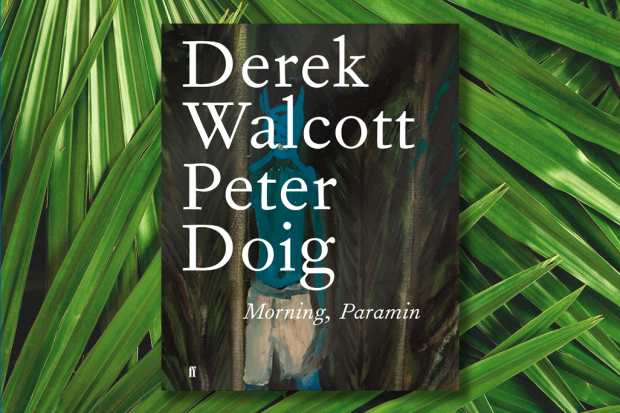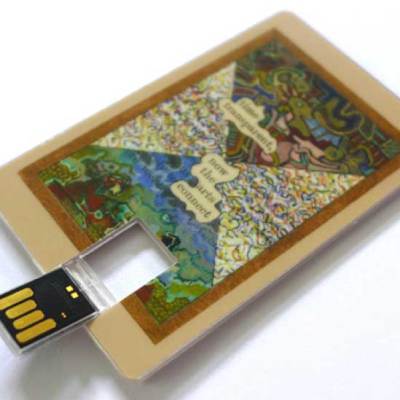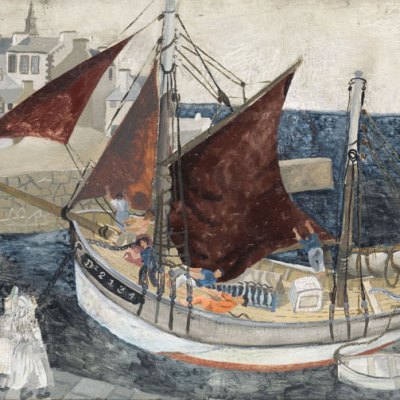In a 2015 interview, Derek Walcott modestly described his work in progress as ‘a book about a painter’, suggesting that the resulting work would have the modest purposes of a conventional art book. (‘The painter is Peter Doig,’ Walcott continued. ‘You know him? He lives in Trinidad, a Scotsman. I like him a lot.’) However, when the most highly esteemed of contemporary figurative painters is collaborating with the only living poet to have won the Nobel Prize for Literature, it would be a mistake to take this modesty at face value.
The book that has emerged, Morning, Paramin, runs to 100 pages and presents 50 of Doig’s paintings alongside 50 new poems by Walcott. On the recto of each double-page spread is a Doig painting, ranging from works such as Hitch Hiker created in 1989–90 when he was an MA student at Chelsea School of Art, to seven new paintings dated 2015. On the facing verso is a Walcott poem, almost always taking the form of a single verse paragraph made up of leisurely rhyming quatrains. The combined power of words and images puts Morning, Paramin in the company of some of the major combinations of poetry and visual art, alongside Parallèlement (1900) by Paul Verlaine and Pierre Bonnard, and William Carlos Williams’s Pictures from Brueghel (1962), both works that face the challenge of integrating the verbal and the visual in different ways.
The immediate imaginative meeting-point between the two men is their shared roots in the Caribbean. Paramin, in the title of the book, is the name of a village in the mountains of Trinidad. Walcott, hailing from St Lucia, is the great originating voice in Anglophone Caribbean poetry, while Peter Doig, born in Scotland, was raised in Trinidad and Canada due to his father’s work for a shipping company, and has lived in Trinidad since 2002.
Many of the Doig paintings in the book either take their brilliant, shimmering colours from the intense light of Caribbean scenes, filtered through Doig’s unique painterly imagination to issue in areas of blood-red water or bright orange shore, or suggest Trinidadian social rituals and symbols: a cricket pitch, a basketball court, a man dressed as a bat, a man carrying a dead pelican, the lion of Judah (a key symbol in the Rastafari movement). Some of the poems, meanwhile, consider the colonial and postcolonial forces acting on the islands’ history, or speak in Caribbean patois – like the poem entitled ‘Man Dressed as Bat’, accompanying the painting of the same name: ‘What the arse was that? What was that thrashing sound? / Boy, is a bat that sailed down from Paramin; / fluttering erect, then limping on the ground.’
In that instance, the poem animates the painting by imagining a speaker viewing the sight the painting depicts. Elsewhere Walcott has a wide range of verbal approaches to the visual. Some poems address Doig directly: one poem late in the book has the title and first line, ‘Peter, I’m Glad You Asked Me Along’. Others talk about Doig’s work in the third person, in a mode of versified art criticism, as in the poem ‘Window Pane’, commenting on the picture of the same name: ‘A sheet of stiff snow becomes a page for drawing / for Peter Doig and a ski slope his fiction, / a whiteness whose width demands exploring / in which the real looms, a contradiction’.[…]
Doig has revealed in an interview that the title of Window Pane refers to a 1990s brand of LSD, hinting at the hallucinatory qualities of many of his canvases. Window Pane is one of the paintings that most approaches abstraction, and the ‘contradiction’ Walcott hits on is perhaps Doig’s ability to summon a sense of the real at the moments when he most tests the bounds of conventional realist composition. Walcott is himself a painter of some ability. His great autobiographical poem Another Life (1973) seemed to show him decisively choosing poetry over painting, but in recent decades his watercolours and oils have adorned the jackets of several previous books of his poetry, and in 2000 his long poem Tiepolo’s Hound was published with 25 of his paintings interspersed throughout the text (although the paperback edition currently in print regrettably omits the paintings). That book already had a dual narrative, as the story of Walcott’s artistic quest was intertwined with the biography of Camille Pissarro, starting from the painter’s birthplace in St Thomas in the Caribbean Sea to Paris in the Impressionist years.
The first pairing of Walcott’s verse with paintings fashioned a dialogue between word and image with some success, but Morning, Paramin surpasses it in imaginative range and formal surprise. The eerie stillness of Doig’s paintings, often showing uninhabited places or single figures seen at a lonely distance with their gazes averted, might have invited a less confident writer to create narratives of the uncanny to fit the images. Instead, Doig’s images find a provocative contrast in the gregariousness of Walcott’s densely peopled verse. The poems freely depart from the starting point of the paintings, and bring in the names of other figures from history, literature, and painting, with the sequence bookended by references to Walcott’s fellow Nobel laureate, the late Seamus Heaney.
In ‘Peter, I’m Glad You Asked Me Along’, Walcott writes that ‘all forms miss perfection’. The mismatches and irregularities of the dialogue between painting and poetry provide a large part of Morning, Paramin’s force. The enterprise will inevitably come up against the impossibility of aligning the verbal and the visual, but as Walcott writes to Doig in that same poem: ‘this craziness is just where we belong’.
From the January issue of Apollo. Preview and subscribe here.



